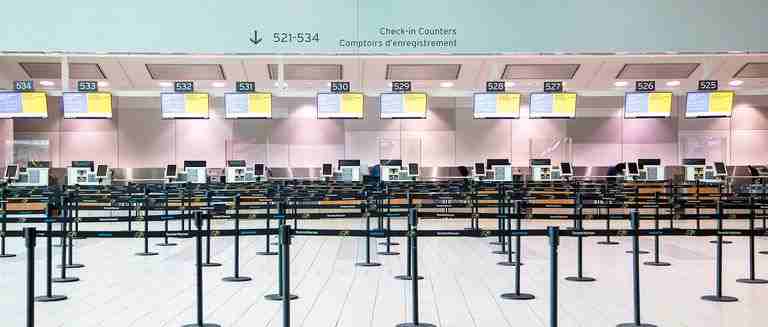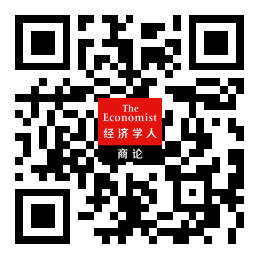航空业遭重创,全球千万工作岗位不保



《经济学人·商论》八月刊文章
《绝境复飞》(Terminal conditions)
The airline-industrial complex
航空运输与航空工业复合体
Terminal conditions
绝境复飞
A sudden collapse in air travel will reshape a trillion-dollar industry
航空旅行业的突然崩溃将重塑一个万亿美元的产业
LIKE MOST international jamborees these days the Farnborough air show wrapped up on July 24th as a virtual event. Webinars featuring grim-faced executives were not as entertaining as noisy acrobatic displays by fighter jets. But commercial aviation’s most important showcase at least marked a point when heads began to turn away from the devastation wrought by covid-19 and towards what comes next.
和眼下大多数国际活动一样,于7月24日落幕的范堡罗(Farnborough)航空展是一场虚拟聚会。一帮神色凝重的高管在网上开研讨会,这可不及战斗机呼啸着表演特技飞行有趣。但是,商业航空产业这一最重要的展会至少标志着人们开始从新冠疫情造成的巨大破坏中扭过头去,把目光投向未来。
As airlines sell fewer tickets, owing to pandemic travel restrictions or travellers’ fear of infection, the industry that makes flying possible faces a reckoning. Aircraft-makers will make fewer passenger jets and so need fewer parts from their suppliers. Ticket-sellers will see less custom and airport operators, lower footfall. Many firms have cut output and laid off thousands of workers. The question now is how far they will fall, how quickly they can recover, and what will be the long-lasting effects.
由于疫情限制出行或旅客担心感染,航空公司卖出的机票少了,这个实现人类飞行梦想的行业如今面临一次清算。飞机制造商将减产客机,需要供应商提供的零部件也相应减少了。机票销售商将更少人光顾,机场运营商也会看到客流量减少。许多公司已经降低了产出,裁减了成千上万名员工。现在的问题是谷底在哪里、多快能恢复,以及会有什么长期影响。
The airline-industrial complex is vast. Last year 4.5bn passengers buckled up for take-off. Over 100,000 commercial flights a day filled the skies. These journeys supported 10m jobs directly, according to the Air Transport Action Group, a trade body: 6m at airports, including staff of shops and cafés, luggage handlers, cooks of in-flight meals and the like; 2.7m airline workers; and 1.2m people in planemaking. In 2019 they helped generate revenues of $170bn for the world’s airports and $838bn for airlines. Airbus and Boeing, the duopoly atop the aircraft supply chain, had sales of $100bn between them. For the aerospace industry as a whole they were perhaps $600bn. Add travel firms like Booking Holdings, Expedia and Trip.com, and you get annual revenues of some $1.3trn in normal times for listed firms alone, supporting roughly as much in market capitalisation before covid-19—and rising.
航空运输加之航空工业的总体规模庞大。去年,全球共45亿人次乘飞机出行。每天有超过十万架次的商业航班升空。行业机构航空运输行动组织(Air Transport Action Group)的数据显示,这些旅程直接提供了1000万个工作岗位,其中600万个在机场,包括商店和咖啡店的员工、行李搬运工、飞机餐厨师等;270万个在航空公司;120万个在飞机制造企业。2019年,它们分别为全球的机场和航空公司创造了1700亿美元和8380亿美元的收入。空客和波音在飞机供应链中享有双头垄断地位,两家公司的销售额合计1000亿美元。整个航空工业的销售额可能达6000亿美元。再加上缤客(Booking Holdings)、亿客行(Expedia)和Trip.com等旅行公司,在疫情爆发前的正常情况下,仅上市公司的年收入就达到约1.3万亿美元,支撑着差不多同样规模的市值,而且还在不断增长。

Instead, the coronavirus has lopped $460bn from this market value (see chart 1).
然而,新冠病毒把这一市值砍掉了4600亿美元(见图表1)。
…… ……
…… ……

↑免费下载《经济学人》中英双语App↑
订阅即可阅读全文(中英对照)
下方扫码直接订阅后即可阅读《经济学人·商论》八月刊《绝境复飞》(Terminal conditions)。现在订阅《经济学人·商论》更可同步解锁《经济学人·商论》发刊至今的2500多篇往期文章,包括1500余篇文章的英文原声音频,并免费解锁商论英语学习社区,听官方译者领读《经济学人》原文。

安装最新版《经济学人·商论》App,体验双语对照阅读:
关键词
公司
疫情
《经济学人·商论》
飞机
as a
最新评论
推荐文章
作者最新文章
你可能感兴趣的文章
Copyright Disclaimer: The copyright of contents (including texts, images, videos and audios) posted above belong to the User who shared or the third-party website which the User shared from. If you found your copyright have been infringed, please send a DMCA takedown notice to [email protected]. For more detail of the source, please click on the button "Read Original Post" below. For other communications, please send to [email protected].
版权声明:以上内容为用户推荐收藏至CareerEngine平台,其内容(含文字、图片、视频、音频等)及知识版权均属用户或用户转发自的第三方网站,如涉嫌侵权,请通知[email protected]进行信息删除。如需查看信息来源,请点击“查看原文”。如需洽谈其它事宜,请联系[email protected]。
版权声明:以上内容为用户推荐收藏至CareerEngine平台,其内容(含文字、图片、视频、音频等)及知识版权均属用户或用户转发自的第三方网站,如涉嫌侵权,请通知[email protected]进行信息删除。如需查看信息来源,请点击“查看原文”。如需洽谈其它事宜,请联系[email protected]。